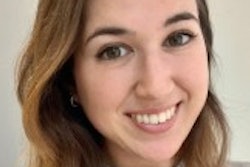It has been researched and discussed at length that placement tests and remedial mathematics courses are obstacles for many students, particularly those from marginalized and underserved communities. Colleges and universities throughout the U.S. have been examining and revising math requirements and creating new options beyond the traditional entry level algebra course.
Just Equations, a non-profit organization that seeks to re-envision mathematics to ensure greater educational equity, issued a report, “Go Figure: Exploring Equity in Students’ Postsecondary Math Pathway Choices.” Authored by Dr. Rogéair D. Purnell and Just Equations founder Pamela Burdman, the report presents a preliminary look at how students at three California institutions—one California State University campus and two community colleges—are choosing their math courses and pathways.
 Dr. Rogéair D. Purnell
Dr. Rogéair D. Purnell
“The goals with this study were to begin to understand the most equitable ways of implementing multiple math pathways and ensuring the implementation of those pathways doesn’t inadvertently lead to tracking of students,” said Burdman. “For many students, algebra is not meaningful or relevant for their interests or aspirations; however, it is required for many STEM fields. We want it to be accessible to students whose aspirations require them to take it, but we don’t want it to be a barrier for all other students.”
With students at California institutions now being given choices for math courses, Purnell said they wanted to examine what information students were receiving regarding the math pathways most appropriate for them. They also wanted to explore how students are given information and guidance to make an authentic decision. The final goal was to present strategies to make sure math pathways foster the skills to ensure math success.
New policies for California State University institutions and California community colleges are giving students, with the guidance of faculty and/or counselors, a primary role in placing themselves into math courses. Since math pathways should align with students’ fields of study, it’s important that students make well-informed choices. Purnell said giving students freedom of choice is much more positive than a dictated math course, but it’s essential that students are receiving thorough information that facilitates success.
 Pamela Burdman
Pamela Burdman
“The real key is to be culturally responsive and to understand what your students’ interests, strengths and needs are,” said Purnell. “In a lot of cases, students don’t have the full breadth of what the opportunities might be for them.”
Part of this, she said, is allaying math anxiety through creative means, such as having students speak with people in fields that interest them and illustrating how math has played a part in those careers. That can help students build an education plan in which they map out what’s involved in pursuing their interests.
Some schools offer summer bridge courses in math before students begin, which raises confidence. Also, in place of remedial prerequisite courses, colleges are now introducing corequisite courses, which are support programs.
“[Now it’s a matter of] working out the technology to have students be able to enroll in a core course along with the support course at the same time,” said Purnell. “That means facilities that will allow a core course to be offered and then the same classroom be used to offer the support course.”
It should also be possible to take multiple math courses if students discover an interest, noted Burdman. “The corequisites are well suited to serve as bridges because corequisite courses show what’s possible for students who need extra support,” she said.
Burdman said that access to well-informed counselors who know and understand the math pathway options is a key component to equity. A huge spark for students is data science courses in which students use real world data sets to answer real world questions on subjects such as public policy and social justice. These are increasingly becoming available at four-year institutions, but not as much at community colleges.
“The guided pathways framework, which has been adopted by all 115 [California] community colleges, really works with what we are calling meta-majors (career clusters) or clusters of programs,” said Purnell. “Selecting a meta-major early on would allow students to have access to a dedicated counselor who understands the skill set and knowledge that would be needed for a student who’s pursuing various careers or a transfer linked to that major.”
Among the recommendations offered in the report is making sure counselors are well informed, so they can best advise students on their math choices. This would include making professional development resources readily available to counselors to ensure their familiarity with math pathways as they align with majors or meta-majors.
Other recommendations include providing students ample opportunities to meet with counselors to discuss their options; eliminating barriers that can lead students to making poor math choices; providing professional development for math faculty so they can create optimal classroom environments; creating structures that enable mutual support across departments; and making sure there is a diverse range of math courses that meet student interests.
“The state has provided a number of resources to support professional development,” said Purnell. “With the guided pathways, many colleges have cross-functional teams of administrators, faculty and professionals that are working to talk to students and learn more about the student experience to inform the changes that they’re making to make sure students have the information they need to enter a path, stay on a path and to be successful.”
“Diversifying mathematics pathways has the potential to lead to vastly improved outcomes for students, including students of color and other marginalized students, but it all depends on their effective implementation and attention to equity,” Burdman said.















